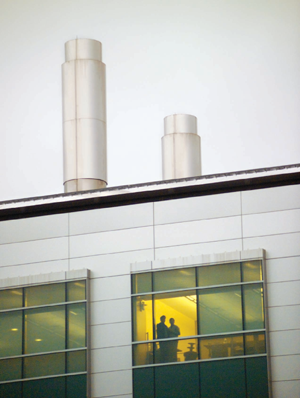CAM: Who is working on the strategic plan for the future?
'We knew that we needed to fix the budget, but at the same time we had aspirational goals. So we asked, is there some way to do both at the same time?' KF: That is quite different. We have handed that off to a group of eight faculty, chaired by Professor Ed Lawler. We've asked them to get input from many others on campus and to come back with an outline for a document in January. In March, we will present a more complete document to the trustees, and in the summer we will release the official document. This part of the process is about our aspirations for the future—understanding that resources are constrained but not dealing with the budget issues. And this part is truly faculty-based. Again, the trustees and the president will have the final authority, but the faculty is authoring it. I think that's the right message to send about where our future is—it resides with our core mission of education, research, and engagement with the community and the world.
CAM: So the process involves two major parts: the task forces looking at ways to reduce costs and improve the University's organization and the faculty committee charged with charting a course for the future. Correct?
KF: The third part is the work with the consultants to save administrative costs. I get asked, how are they tied together and who's making sure they're linked? Ideally, we'd do one thing at a time and then line it all up—but that would take about twenty years, and I want to be finished with this a year from now. I want to start implementing things, so we're doing it all in parallel.
 CAM: You've already announced cost-saving changes in the central administration. Were you trying to set a tone for others to emulate?
CAM: You've already announced cost-saving changes in the central administration. Were you trying to set a tone for others to emulate?
KF: Absolutely. The president started the whole process by reducing his salary and eliminating staff positions in his office, showing that he was reducing expenditures. Even the way he travels— he takes the [Campus-to-Campus] bus a lot more. Secondly, he has reduced the number of vice presidents. I've tried to follow his example: we've reduced the number of vice provosts, and we're looking at other changes in my office. And we're asking, are there people who report to me who should report somewhere else? We expect to make further announcements in the late spring about how the provost's office is organized.
CAM: In addition to cutting costs, are you trying to streamline the decision-making process?
KF: Yes. The more people you have involved in making a decision, the more cumbersome it is—and often the more expensive. In a nonprofit organization like a university, when resources are plentiful, you tend to expand. The bureaucracy expands. We're trying to remove administrative bureaucracy across the institution.
CAM: Does that mean you want to centralize decision-making?
KF: It's an important question when looking at the administrative, business, and support operations across the university: should we centralize services like information technology and human resources, or should they be decentralized? I don't like either option. I think that all of us who are involved in supporting Cornell's core mission of education, research, and engagement—and that's pretty much everyone—need to change the way we think when making these decisions. There has to be a partnership between those who are at a central point and those who are out where the work is being done. We can't just say that the central administration should make the decisions in human resources or finance or information technology. And we can't just say that it has to be done in the units. We have to do it together.
CAM: One theme that emerges in the task force reports is a call for excellence over breadth—for a focus on academic areas where Cornell is strongest. Is this in conflict with the original mission of "any study"?
KF: The president and I embrace Ezra Cornell's view of a university accessible to everyone and broad in its offerings. But I also believe that the economic downturn has made us face the following question: should we have an institution where our investment is spread thin or where it is deep? There's a tension there, and we need to work toward finding the correct balance. We're not going to be like CalTech, narrowly focused. That's a different kind of university. On the other hand, this institution has always made choices and has never offered every course to every student. When you are dealing with constrained resources, you need to choose areas where you are going to grow and areas that you are not going to focus on. We want Cornell to be broadly recognized by the public and peer institutions as being a top ten university worldwide. So the question is, can we do that and still have all the breadth that we currently have? Resources are constrained, so we may have to stop doing certain things. We should probably end a few programs, close some centers, and merge some departments to create more focus and visibility.


